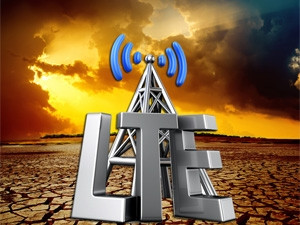
While the world at large has seen significant development in the long-term evolution (LTE) ecosystem - largely due to the increase in enabled devices - SA is still stuck in the mud, awaiting high-demand spectrum allocation.
The Global Mobile Suppliers Association (GSA) this week released its latest update to the Status of the LTE Ecosystem, revealing 100% growth in the number of LTE user devices globally in the past year - with smartphones underlining their status as the largest device category.
According to GSA president Alan Hadden, rapidly expanding LTE network coverage (boosted by digital dividend spectrum coming into use in several markets), the introduction of LTE-Advanced capabilities by operators in all regions, and the fast-developing time division duplex market in China are among the key drivers behind the growth the association reported on Tuesday.
Slow to benefit
SA got its first taste of the next-generation wireless technology in October 2012, when Vodacom beat rival network MTN to the punch, launching commercial LTE with an initial 70 base stations.
At the time, one of the major barriers to entry that industry observers pointed out, was the lack of compatible devices. Today - from only a handful about two years ago - Vodacom offers 22 smartphones and nine tablets that are LTE-enabled.
But SA will not be able to benefit fully from LTE device proliferation until government's telecoms department and the Independent Communication Authority of SA (ICASA) sort out the biggest barrier for operators: spectrum allocation.
World Wide Worx MD Arthur Goldstuck has tagged SA as being stuck in the middle of a "spectrum no man's land" - despite the high hopes former communications minister Yunus Carrim instilled before he was replaced by former spy boss Siyabonga Cwele in May.
ICT veteran Adrian Schofield says even in prime urban areas, South Africans are still not able to find consistent high-speed signal to be able to take full advantage of the hypothetical speeds available. "My own experience of an LTE smartphone/phablet is that I usually look for a WiFi connection, which gives more consistent performance than '4G'."
Other barriers to entry for consumers, says Schofield, are the cost of devices and the cost of the connection - both still high in comparison to other markets. While there are an increasing number of lower cost smartphones, some of the latest flagship smartphones that have LTE capability built in will set consumers back in excess of R10 000.
Local LTE
Until government attends to the digital dividend delay and the allocation of high-demand spectrum that is suited to LTE, both of SA's leading mobile operators, Vodacom and MTN, will continue to refarm existing spectrum - putting a strain on 3G networks.
Meanwhile, Cell C and Telkom Mobile are still only running LTE trials. Cell C says it will not roll out LTE on a national scale until there is more clarity regarding government's broadband plans for SA.
Cell C says it would like to see the formation of a consortium consisting of both private and government entities that will be enabled to deploy a national LTE network, using the spectrum that becomes available when broadcasters switch from analogue to digital. However, at this stage, with consistent delays in implementing digital migration, Cell C's notion remains moot.
Africa Analysis analyst Dobek Pater sums up SA's static LTE status quo: "Quicker deployment is expected only once the so-called LTE spectrum has been awarded by ICASA."
Share